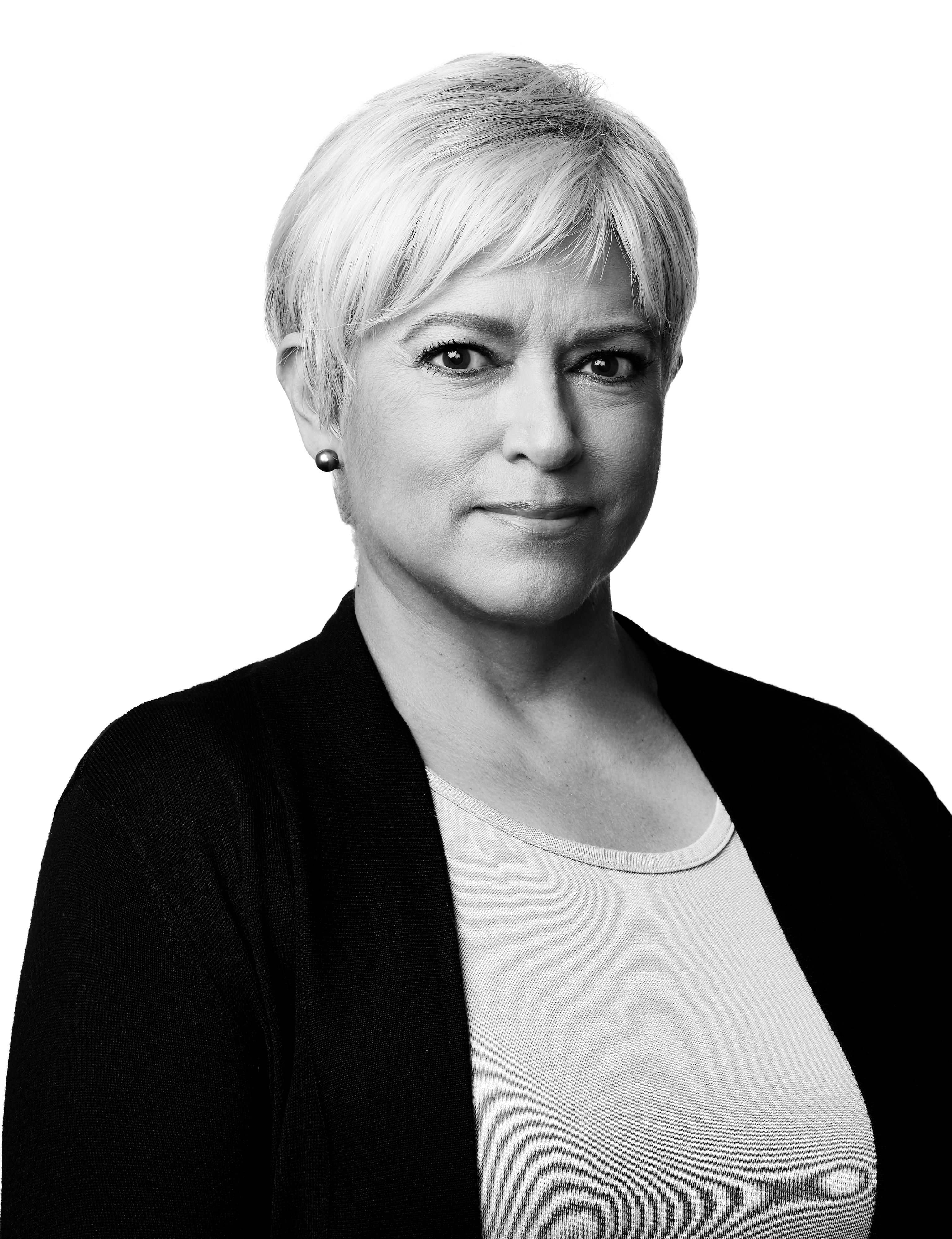
18 minute read
Our products
RAYSTATION: ENHANCING THE USER EXPERIENCE

A patient-centric product roadmap and a relentless focus on user experience: these are the fixed points that define the operational and strategic priorities for Emil Ekström, chief functionality owner of RaySearch’s treatment-planning system RayStation®*.
Ekström, as his job title suggests, is at the sharp-end of RayStation product development, overseeing a 90-strong cross-disciplinary team comprising computer scientists, UI/UX specialists, physicists, algorithm developers and testers. Their remit: to translate RayStation product strategy – which is owned and articulated at executive board level – into continuous improvement and product innovation for a diverse clinical customer base that runs to well over 700 cancer centers in 40 countries.
Collectively, Ekström and colleagues share a near-obsessive focus on user experience. As such, the team mindset is not only to enhance the speed and efficiency of the algorithms with every release, but to make RayStation software as intuitive and friction-free as possible. “That means smooth workflows, not too many clicks, and access to the tools you need when you need them,” Ekström explains.
DIVERSIFY AND UNIFY A case in point is the launch of high-dose-rate (HDR) brachytherapy planning in the RayStation 10B* release at the end of last year – a natural progression given RaySearch’s aim of supporting as many radiotherapy modalities and treatment machines as possible within RayStation. For context, HDR brachytherapy involves the temporary insertion of a small radioactive source inside the patient to yield highly targeted dose delivery to the tumor while minimizing damage to adjacent healthy tissue. The technique can be used alone or in conjunction with other therapies to treat a range of indications, including prostate, breast, head-and-neck and skin cancers.
Thanks to this new module in RayStation, clinics are now able to use the same treatment planning system for HDR brachytherapy and external-beam radiotherapy, yielding
significant upsides in terms of staff training and patient throughput. “A key driver here is simplification – the convergence towards a more efficient and unified clinical workflow,” notes Ekström. “The possibilities of combining external-beam radiation treatment and brachytherapy are further enhanced by tools for working with multiple image sets, image deformation and dose summation.”
Last year also saw significant progress regarding RayStation’s evolving support for treatment planning in proton therapy. Most notably, the latest iteration of the software’s Monte Carlo dose calculation engine is already shaping up as a game-changer for planning workflows at proton therapy clinics. Through the utilization of multiple graphics processing units (GPUs), the dose engine offers “very accurate and extremely fast computations…with final dose computation times of less than five seconds”, according to Ekström. The ultra-fast computations leave time to create and explore even more possible treatment plans as a means to find the best option for every single patient.

ROBUST PLANNING Robustness was another prominent theme for the RayStation development team in 2020. The creation of robust treatment plans and the evaluation of robustness prior to treatment delivery are non-trivial challenges in radiation oncology. At a granular level, the quality of a radiation treatment plan depends strongly on the ability to deal with uncertainties that may originate from patient set-up as well as from changes in the patient anatomy.
With this in mind, RayStation’s “robust optimization framework” provides tools to compute and assess multiple error scenarios with different uncertainty settings. What’s more, that framework has now been extended to take into account intra- and inter-fractional tumor motion and deformation – changes in the position or geometry of the tumor during the delivery of a single fraction as well as over the entire treatment course. “For the end-user,” notes Ekström, “these tools provide rapid decision support through the display of different robustness metrics versus the clinical goals of the treatment.”
INTEGRATE TO ACCUMULATE Meanwhile, tighter integration between RayStation and RaySearch’s oncology information system RayCare®* remains an ongoing priority. As such, RayStation now supports a task list shared with RayCare for improved workflow management. “This helps the treatment planner to keep track of what tasks to perform for a specific patient in the same way as in RayCare,” explains Ekström. The 10B RayStation release also makes it possible to write scripts that access RayStation and RayCare at the same time, automating repetitive work-steps that cut across both products.
More broadly, argues Ekström, the long-term vision for RayStation remains as compelling today as it’s always been: to integrate all the tools users need for treatment planning, for almost all machines and modalities, with everything implemented consistently in one and the same system. The upcoming RayStation 11A* release represents another important step along that road with the addition of support for Accuray’s CyberKnife® machine, a robotic treatment system that delivers stereotactic radiosurgery and stereotactic body radiation therapy.
“Underpinning it all,” Ekström concludes, “there’s the ultrafast and accurate dose computation, powerful optimization and robustness tools, plus various ways to automate repetitive tasks. That is RayStation.”
RAYCARE: A LESSON IN ONCOLOGY LOGISTICS


RayCare®* is a next-generation oncology information system (OIS) designed from the ground up to address the complex logistical challenges facing the cancer clinics of today – and tomorrow. As chief functionality owner Eeva-Liisa Karjalainen explains, that means efficient coordination of multiple treatment modalities with a relentless focus on clinical resource optimization, workflow automation and data connectivity.
Karjalainen, for her part, heads up a 50-strong cross-functional product team comprising system developers, technical testers, system architects and clinical specialists. “Beyond my day-to-day operational remit, I’m also a member of the RayCare and RayWorld steering committees,” she explains. “The RayWorld steering committee is the RaySearch forum for coordinating the strategic roadmaps across our full product portfolio – RayCare included.”
The RayCare roadmap, in turn, is guided by inputs from the RaySearch Clinical Advisory Board, a global network of nine high-profile oncology clinics – among them MD Anderson Cancer Center (US), Princess Margaret Cancer Centre (Canada) and Universitäts Klinikum Heidelberg (Germany). “The partners provide deep insights and broad domain knowledge to shape our long-term product strategy,” notes Karjalainen. “As such, the Board has been instrumental in the development and positioning of RayCare as a next-generation OIS as opposed to a variation on existing themes.”
MAINTAINING MOMENTUM Within that higher-level framework, Karjalainen and her team notched up no shortage of impressive clinical and technological milestones throughout 2020. In Belgium,
for example, the Particle Therapy Interuniversity Centre Leuven (PARTICLE) became the first clinic to treat patients using RayCare and IBA proton therapy systems. The OIS is deployed in tandem with RayStation for treatment planning and IBA’s Proteus ONE, a single-room proton therapy machine that combines pencil-beam scanning and isocenter volumetric imaging capabilities. “It’s been a solid start with the new RayCare clinical workflow,” says Karjalainen, “and demonstrates the Leuven team’s confidence with the RaySearch product suite.”

Elsewhere, the Swiss Medical Network, one of Switzerland’s largest private clinic groups, has taken the first step towards a full RayCare deployment with RayCare Flow, a way to automate the treatment planning workflow in RayStation®*, enhancing operational efficiency and workload visibility in the process. Also last year the Yonsei Cancer Center in Seoul became the first clinic in Asia-Pacific to purchase RayCare, selecting the OIS and RayStation as the backbone of its new carbon-ion therapy program for difficult-to-treat tumor sites.
USER-CENTRIC INNOVATION In terms of product innovation and continuous improvement, the launch of RayCare 4B* in December is emerging as a potential “game-changer” – thanks in large part to an interface that enables connection into Varian’s TrueBeam radiotherapy machines. “Put simply,” says Karjalainen, “combining the workflows, scheduling and resource management of RayCare with the TrueBeam treatment machine opens up a much larger addressable market. It’s a development that’s been driven not just by our Clinical Advisory Board but by the wider radiation oncology community as well.” As for the detail, the interface has been specified under an interoperability agreement with Varian and is designed to seamlessly connect RayCare into the TrueBeam operating systems in the radiotherapy control room. The Varian side of the interface will follow in conjunction with a new TrueBeam release under a planned regulatory submission, currently targeted for later this year.
THE RAYCARE ROADMAP Regarding the longer view, Karjalainen sees RayCare opportunities taking shape along three main coordinates. For starters, there are efficiency gains to be had from more informed decision-making around resource optimization and clinical budget allocation. “RayCare helps customers understand how their workflows can be improved – and especially how those workflows can be automated,” she explains. “There’s also the connectivity gain – fostering openness by breaking down data siloes in cancer care, so that we can tie everything together from diagnosis to treatment and follow-up.”
At the heart of it all is the patient. Right now, RayCare provides a powerful vehicle for clinical collaboration, bringing all of the oncology disciplines together in one place to coordinate, deliver and manage patient care. Over time, however, there’s a planned Patient Portal on the RayCare roadmap that will enable the patient to participate in that collective conversation. “It’s not rocket science,” concludes Karjalainen. “Outcomes are improved all round when patients are actively engaged in shaping their own treatment and care.”
DATA-DRIVEN ONCOLOGY

The commercial launch of RayIntelligence® heralds a new era of cloud-based, data-driven oncology. "In every respect, a collective achievement from a group of engineers and scientists who combine deep domain knowledge with a passion for collaboration and a laser focus on the customer’s needs."

MACHINE LEARNING: SPEED, AUTOMATION, EFFICIENCY

The clinical roll-out of machine learning technologies represents an inflection point in radiation oncology, promising innovation and transformation – at scale – across the planning, delivery and management of cancer treatment programs. For Fredrik Löfman, Head of RaySearch’s machine learning group, the operational upsides for oncology clinics are compelling – and already within reach.
“Machine learning is all about increased efficiency, consistency and automation of the core clinical workflows in radiation therapy,” explains Löfman. That’s a broad canvas: think tumor and organ segmentation, optimized treatment planning, and the end-game of online adaptive radiotherapy tailored to the unique needs of each patient. “Our portfolio of pretrained machine learning models has scaled significantly since January,” he notes, “while the rest of this year is all about the commercial introduction of these models, accelerating uptake and gaining further clinical validation from early-adopters.”
That process, it seems, is well under way. Consider the usecase at Mälarsjukhuset in Eskilstuna, Sweden. In spring of last year, against a backdrop of COVID-induced staff shortages, Mälarsjukhuset’s medical physics team fasttracked clinical deployment of RayStation’s deep-learning segmentation algorithms – a move that reduced the time spent on patient contouring for planning of pelvic and prostate radiotherapy by as much as 75% versus manual or semi-automatic methods. Put simply, RayStation’s deep-learning functionality* – trained and validated on a cohort of around 350 prior clinical cases – automatically creates contours of the patient’s organs at risk in the tumor near-environment. Clinical staff at Mälarsjukhuset are then able to review and, as necessary, fine-tune the segmentation, such that contouring now only takes 10-15 minutes per patient (versus up to an hour previously).
“The Eskilstuna team was incredibly efficient,” says Löfman, “implementing our deep-learning algorithms in a secure and efficient way to realize immediate operational efficiencies.” What’s more, RaySearch’s newly released head-and-neck model, developed and trained in collaboration with researchers at the University of Turin, promises even bigger time savings, with automatic contouring of 35 critical structures (versus just five for the pelvic model). “Over time, we aim to cover all the main disease sites for radiotherapy treatment,” notes Löfman. “We have the methodology, the algorithms and the infrastructure within RayStation®. In the 2021 release schedule, for example, we will introduce pretrained deep-learning models for autosegmentation of structures in the breast region (including lymph nodes) as well as other structures relevant in radiotherapy planning.”
MODEL BEHAVIOURS Alongside clinical “go-live” of deep-learning segmentation, Löfman and his cross-disciplinary team – 20 scientists and engineers split across planning, imaging and analytics subgroups – have been preparing the ground for a step-function expansion of machine learning-enabled automation in treatment planning. Here, RaySearch’s machine learning models are used to predict and optimize 3D spatial dose, with in-built strategies to automatically generate a set of deliverable treatment plan candidates. The result: fast-track comparison of treatment plan options followed by selection of the optimal plan for each patient in terms of tumor coverage, conformality and tissue sparing. “Unlike traditional manual planning, the radiation oncology team will start the day with, say, five candidate plans for each patient scheduled to receive treatment,” explains Löfman. “They’ll quickly review those plans, pick the most suitable, and then either fine-tune or approve that plan straight away.”
A long-standing R&D collaboration with the Princess Margaret Cancer Centre in Toronto will see nine validated and pretrained machine learning models included as part of the RayStation 11A* release (with at least 10 more pretrained models to follow in the 11B* release next year). Example sites include prostate, breast, head-and-neck, liver, rectum, brain and lung – most of them incorporating different stages and treatment protocols. Worth noting as well that RayStation 11A will include RaySearch’s first pretrained machine learning model for proton therapy planning (another head-and-neck model).
“Clinics can tune and commission these models on their own local data and treatment protocols,” explains Löfman. “They can also share models without sharing their patient data.” All of which streamlines the path to clinical translation, with users able to “plug-and-play” rather than the far more onerous task of collecting data and then training their own models.
MODEL COLLABORATIONS Down the line, ambitious plans are taking shape for a RaySearch-hosted central repository to promote sharing and co-development of machine learning models across the radiation oncology community. The vision: an interactive hub to facilitate multicenter collaboration, promote best practice and accelerate clinical innovation on machine learning treatment protocols. The specifics: think quality assurance and benchmarking of models; version handling and regression testing; as well as monitoring of model distribution. “There are significant opportunities arising from colocation,” says Löfman. “A unified repository will allow cancer centers to upload or download a diverse portfolio of machine learning models – evaluating, comparing and benchmarking them for research or clinical purposes.”
Taking the long view, it’s data – and lots of it – that will accelerate machine learning innovation in the radiation oncology workflow – and ultimately the realization of optimized treatments and enhanced patient outcomes. “In order to train and validate machine learning models that can be distributed across borders and across continents,” notes Löfman, “it’s going to be vital to build and share large-scale data sets that researchers, clinics and industry can access in an unbiased and representative way.” The future’s bright, Löfman concludes. “Underpinned by cloud-based analytics platforms like RayIntelligence, a new era of data-driven decisionmaking will redefine what’s possible in comprehensive cancer care."
RayIntelligence
REIMAGINGING ONCOLOGY WITH RAYINTELLIGENCE
The commercial launch of RayIntelligence® heralds a new era of cloud-based, data-driven oncology, argues Fredrik Löfman, Head of Machine Learning at RaySearch. Here he explains how the software will enable cancer clinics to consolidate, structure and interrogate their fragmented data stores to improve decision-making on treatment protocols and enhance patient outcomes at scale.
WHAT’S THE HEADLINE TAKE ON RAYINTELLIGENCE? RayIntelligence gives oncology clinics a robust and scalable suite of software tools to collect, structure and analyze their diverse and often siloed data sources – capabilities that pave the way for new levels of personalization in the treatment and care of cancer patients. Right now, the product comprises two core building blocks: RayData delivers consolidated data warehousing – essentially large-scale data aggregation, storage and search – while RayAnalytics provides structuring, transformation and dashboarding of data for easier consumption by end-users. Also in the works is RayMachine, a pipeline for training, versioning, validation and approval of machine learning models across the oncology workflow.

Innovation aside, it’s important to acknowledge the high-functioning team of people responsible for getting RayIntelligence to market. In every respect, a collective achievement from a group of engineers and scientists who combine deep domain knowledge with a passion for collaboration and a laser focus on the customer’s needs.
EXPLAIN HOW THE BUILDING BLOCKS WORK TOGETHER We’re using a “hybrid cloud” architecture, with the RayData module providing the on-premises component. As such, RayData integrates directly within the clinic’s IT network, where it is responsible for extracting data from the treatment planning system RayStation. Future releases will expand that coverage to include the RayCare oncology information system (OIS) and RayCommand treatment control system (TCS), while open APIs will enable clinics to access data from a range of third-party OIS, picture archiving and communication systems (PACS) and hospital information systems (HIS).
Following extraction, data are uploaded to the Amazon Web Services (AWS) cloud for further analysis, with RayData providing an advanced search query interface, a dashboard for visualizing transferred data, as well as an interface for connecting third-party business intelligence tools. RayAnalytics, in turn, offers a dedicated cloud environment for computational transformation and visualization of uploaded data. It’s powerful functionality: an array of pregenerated dashboards enables end-users to search, merge and interrogate patient data sets, opening up opportunities over time to support their clinical trials, research studies and the training of machine learning models.
The cloud-based nature of RayIntelligence will ultimately encourage greater collaboration between oncology clinics.
SO THIS IS ALL ABOUT CLOUD-BASED ONCOLOGY ANALYTICS? That’s right. This is a new departure for RaySearch and there’s a lot of innovation going on – not just in terms of the enabling software but also the commercial model. The RayIntelligence license, for example, is based on an annual subscription, which means that customers can spread their software investment over an extended timeframe. The financial driver here is that even in the best of times – let alone the middle of a pandemic – the upfront capital outlay on a traditional software license can prove a blocker for smaller clinics – although worth noting that subscription cost scales with the customer’s data storage footprint.
HOW WILL THE ROLL-OUT WORK WITH THE CLINICS? A key feature of RayIntelligence is that it’s straightforward – given the cloud-based nature of the product – to switch on evaluations with prospective customers. The user simply clicks on a link to access a demonstrator version with example use-cases. If they like what they see, there’s a friction-free process to sign up for the annual subscription. Underpinning it all, of course, is bulletproof cybersecurity and authentication, with all data encrypted both in transit and at rest. Users are authenticated with the credentials of their clinic, while uploaded data are stored in AWS close to the clinic for low latency.

AND THE LONG VIEW ON RAYINTELLIGENCE? We’re positioning RayIntelligence as the enabling framework for data-driven oncology – effectively a set of cloud-based software tools to enhance the availability, accessibility and standardization of patient, treatment, workflow and outcome data. What’s more, our expectation is that the cloud-based nature of the product will ultimately encourage greater collaboration between clinical institutions, both regionally and globally. Think federated access to big data and machine learning models that, in turn, will inform operational best practice in the planning, optimization and management of combined cancer treatments across multiple modalities. Clinical innovation grounded in real-world data: that’s the future of cancer care.

Monya Hase
Sr. Applications Manager, Oncology, Clinical Research & EPIC BeaconClinical and Revenue Cycle Applications, Providence St. Joseph Health, USA
Providence St. Joseph Health has developed a very strong partnership with RaySearch® over the years. We implemented our first instance of RayStation® in 2014 at our Providence Regional Cancer Partnership in Everett, Washington. Since then we have expanded RayStation to eight Radiation Oncology departments, making RayStation our enterprise system standard for treatment planning. With the acquisition of the St. Joseph’s health system, we will be adding RayStation to more sites in the near future.

In 2020 we consolidated all of our separate installations onto a single enterprise platform that takes advantage of server resources, as well as the new enterprise license model that RaySearch offers. This has greatly simplified our application architecture and how we technically support it. Our partnership with RaySearch has also grown in the way of validation and development. Our largest site in Seattle, Washington has been piloting the machine learning capabilities to perform auto-contouring. This has the potential to significantly speed up the contouring process and improve the efficiency of our treatment planning process. This same site is also assisting RaySearch on strengthening their brachytherapy module.
We at Providence also very much appreciate the level of technical support we receive from RaySearch. We are lucky to work with the same support engineers, who know our environment. If an issue arises, we are always able to get support quickly and the same engineer sees it through to resolution. Overall, the technical and sales teams at RaySearch have excellent prompt customer service, which makes for an easy and open working relationship.










